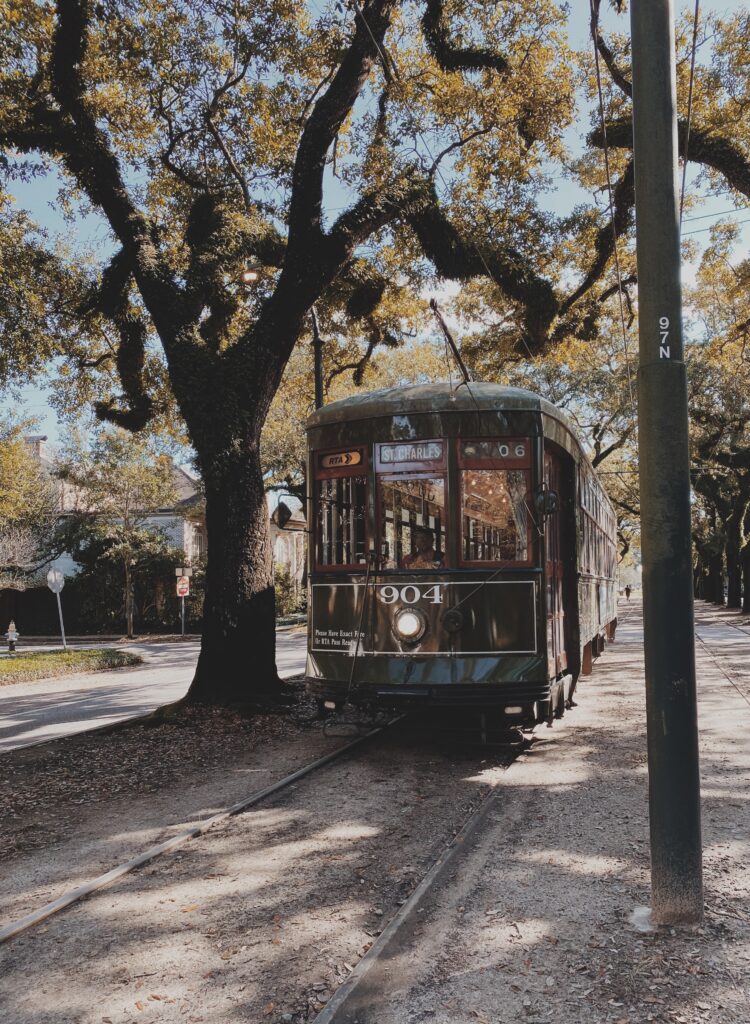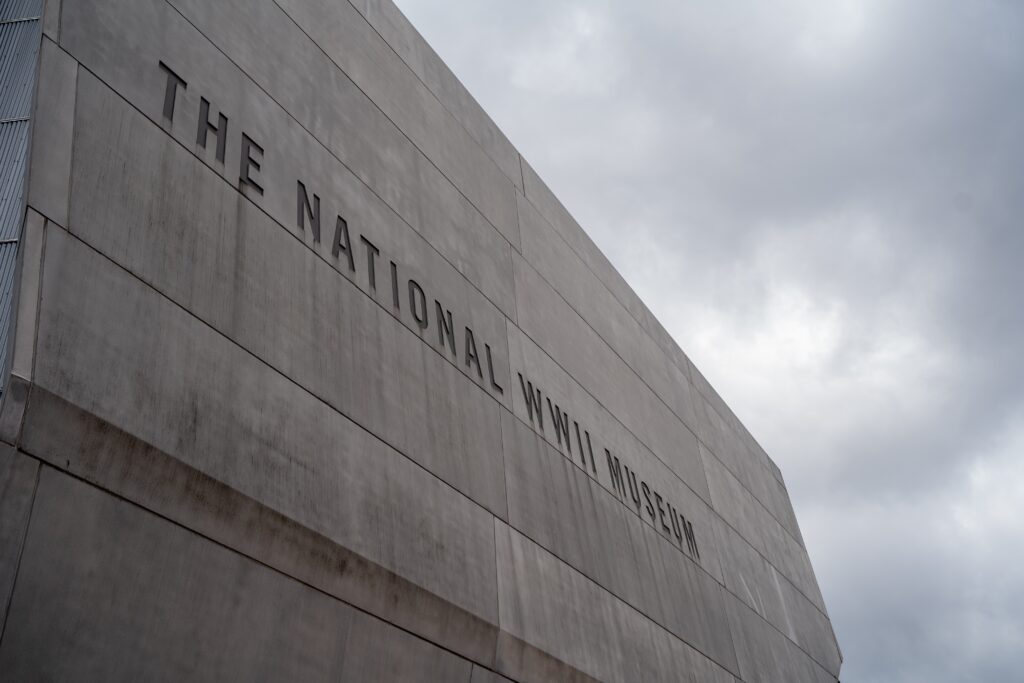New Orleans has history, cuisine, and culture, so it was long overdue I write about all the amazing things you can do, see, eat, and experience when visiting Louisiana and its rich and vibrant history and culture. My friends Julianne and Leslie gave me some amazing New Orleans advice which is included in this post. I kept notes on all their recommendations for a potential trip we were planning before the pandemic changed everyone’s plans. Basically, this is the ultimate post for anyone visiting New Orleans.
Side note: This is part of my 12-part series of travel posts all summer long! All my travel posts including this series and all posts from the last 12 years can be found here. All the posts in July are focused on destinations in the United States and next month look for all the posts to focus on Italy.
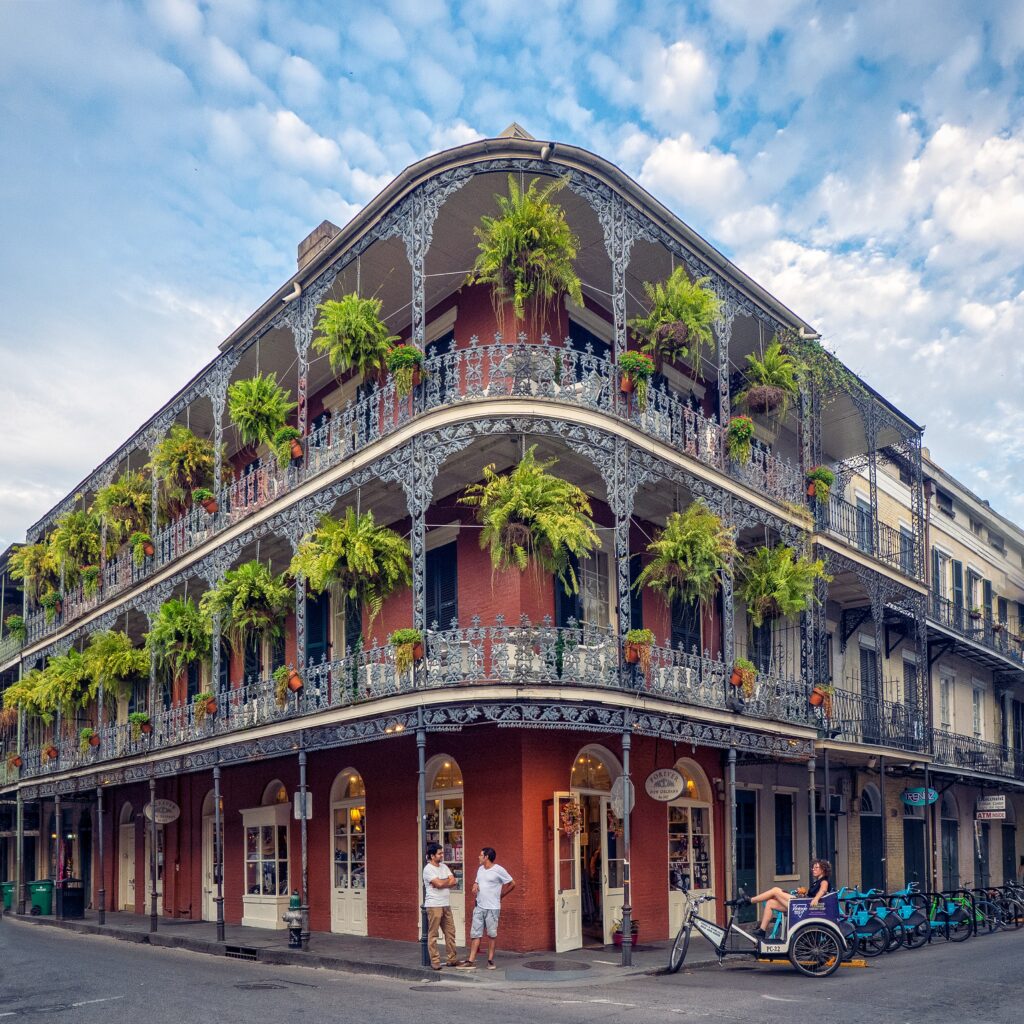
History
The city of New Orleans was founded by the French in 1718 and was later ruled by the Spanish before becoming part of the United States in 1803. New Orleans was a major port city and a center of trade and commerce, attracting immigrants from all over the world, including Africa, the Caribbean, Europe, and South America. I’m not from New Orleans, so my understanding of history is from what I’ve read (no, not Wikipedia) and what my friends from Louisiana have shared with me.
Creole and Cajun are important cultural and ethnic groups in the history of New Orleans, Louisiana, and both have had significant impacts on the city’s history and development. Creoles, also known as Louisiana Creoles, were people of mixed African, European, and Native American heritage who lived in New Orleans and other parts of Louisiana in the colonial (1718-1803) and antebellum (1812-1861) periods. They formed a distinct society and culture, characterized by their own customs, traditions, and language (Louisiana Creole French). Creoles made important contributions to New Orleans’s cuisine, music, architecture, and commerce. Cajuns, on the other hand, are descendants of French-speaking colonists who were expelled from Acadia (now Nova Scotia and New Brunswick) in the late 17th and early 18th centuries. They settled in the rural areas of Louisiana, where they established their own distinct culture and traditions, including music, cuisine, and language (Cajun French).
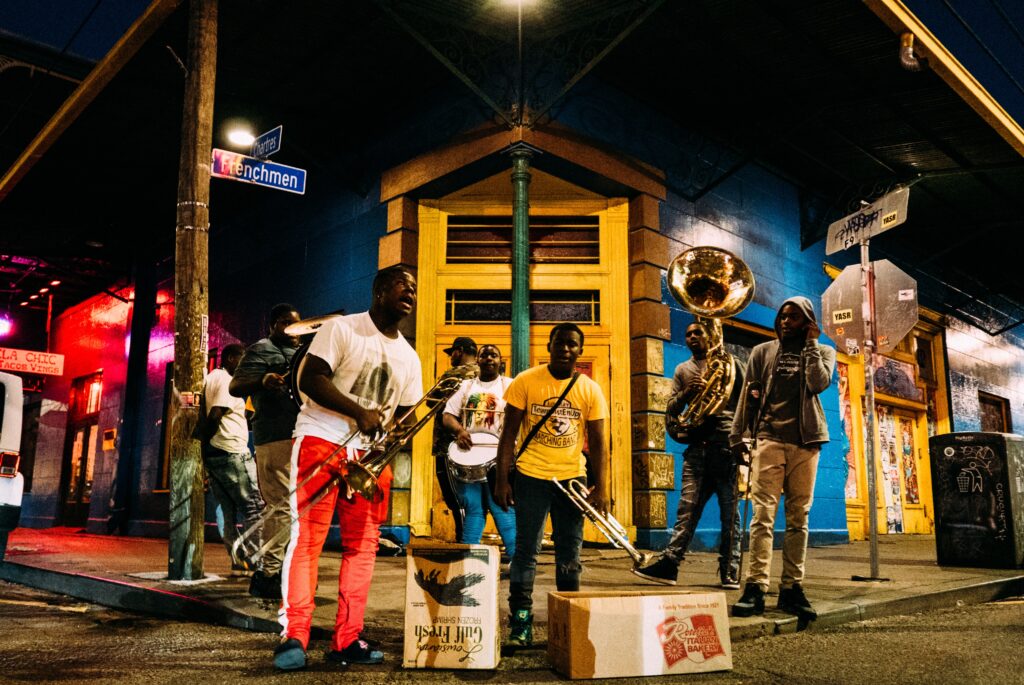
Culture
The city’s unique blend of cultures and influences has created a distinctive cultural identity that is reflected in its music, cuisine, festivals, and traditions. New Orleans is famous for its contributions to jazz music and is also known for its blues, funk, and brass bands. New Orleans has a rich history of American culture in the African tradition, such as second-line parades, where participants dance and sing through the streets to the beat of brass band music. Music is one the best parts about New Orleans, but there are so many things that go well beyond drinking on Bourbon Street.
Another notable aspect of New Orleans culture is its celebration of Mardi Gras, a pre-Lenten festival that features colorful parades, music, and revelry. New Orleans has several museums that are worth visiting, including the National WWII Museum, the New Orleans Museum of Art, and the Louisiana State Museum. Visit the WWII museum. Wonderful comprehensive look at the Great War. Many veterans volunteer there and would love to tell you stories. Multiple buildings with a nice John Besh restaurant and soda shop too.
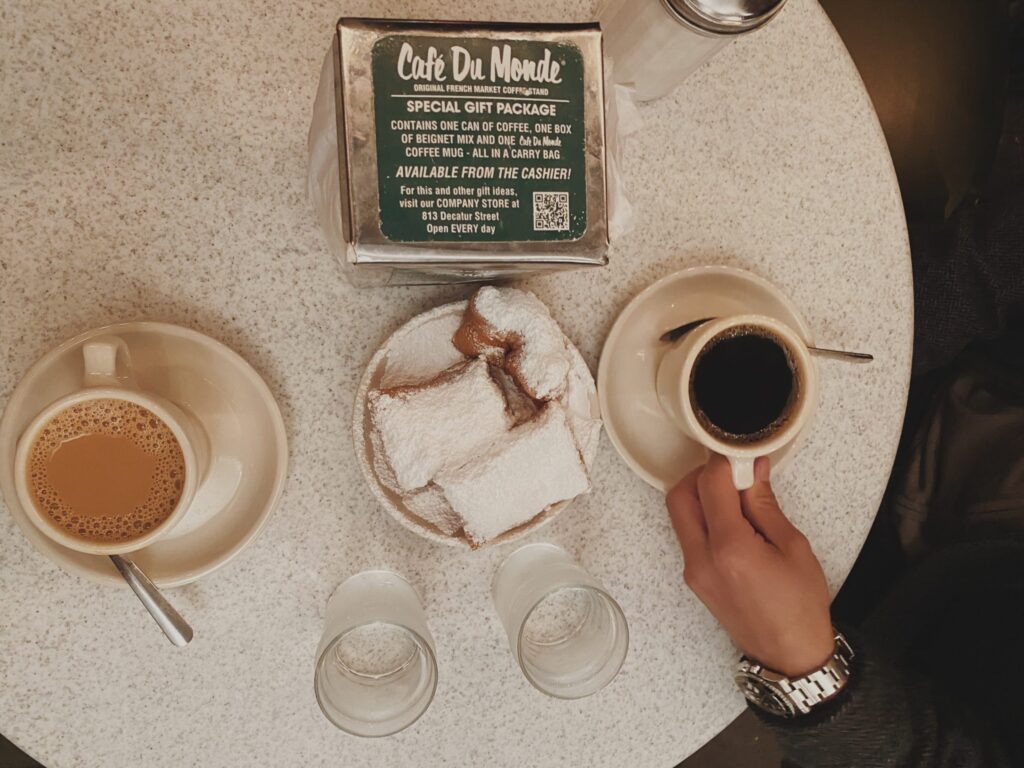
Planning Your Trip
Research the best time to visit New Orleans based on your interests, as the city has many festivals and events throughout the year, such as Mardi Gras and the Jazz & Heritage Festival. Mardi Gras starts on Twelfth Night (12 days after Christmas on the Feast of the Epiphany) until Shrove Tuesday (the day before Ash Wednesday and the start of Lent). If you’re not there for a festival (which is best if you wish to avoid peak crowds), you won’t miss the music because that’s always alive and well in NOLA. Just take a walk through the French Quarter, visit the New Orleans Jazz National Historical Park or attend a live jazz performance.
In terms of exploration of the city and beyond, there is no shortage of sights and history to take in. There are many tour options available in New Orleans, including walking tours, bus tours, and boat tours. These can be a great way to learn about the city’s history, culture, and architecture. You could always have a day trip or explore beyond the city. New Orleans is located near several other interesting destinations, such as the swamp and bayou country, plantation homes and the city of Baton Rouge.
For safety, don’t walk past Rampart Street. Someone will bet you where you got your shoes, don’t fall for it. For safety, when walking Bourbon Street, skip the first block from Canal Street. For comfort, reserve a room NOT on the Bourbon Street side of whatever hotel you choose.
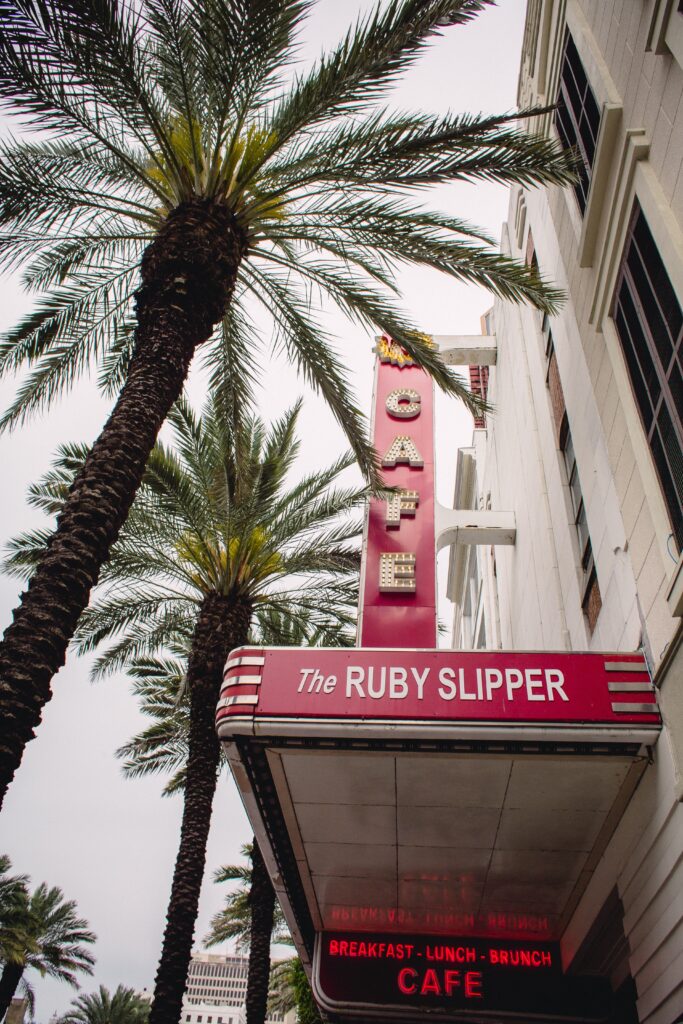
The Cuisine
The city is also renowned for its delicious and diverse culinary traditions, including Creole and Cajun dishes like gumbo, jambalaya, po’ boys, and crawfish étouffée, which reflect its diverse cultural heritage. Be sure to try some of the famous restaurants, such as Commander Palace, Antoine’s, and Mother’s (their grits with black ham is apparently amazing). No matter where you go, be certain to eat beignets, a muffelata, an oyster po boy, crayfish, red beans and rice, and jambalaya somewhere. Buckle in, this is going to be a very long section.
Café au lait and beignets are musts when you’re in New Orleans. The top three destinations for this are:
• New Orleans Coffee and Beignet company.
• Morning Call in city park. Morning Call has been a destination since 1870.
• Cafe du Monde for their beignets.
This is a big list of the places to eat in NOLA:
- Willie Mae’s Scotch House (the best fried chicken ever and red beans & rice)
- Tujague’s (call ahead to order the Bonne Femme and get a Grasshopper to drink)
- Court of Two Sisters (brunch buffet)
- Camellia Grill (Must! Pralines and a daiquiri – by Tulane and in French Quarter)
- The Coffee Pot (Sunday Brunch)
- Mandina’s Restaurant (neighborhood fave for seafood since 1932 known for their nightly specials)
- Katie’s Restaurant (homemade pizza and po-boys. Low-key and reliably excellent)
- The Ruby Slipper Cafe (shrimp n grits and a Bloody Mary).
- Tavern sandwiches & po-boys (Bill Clinton and Barack Obama have each dined here! Eat outside or get it “to go” and sit on the bank of Bayou St. John for a picnic under an Oak tree)
- Antoine’s (Oysters Rockefeller or Eggs Sardou)
- Yo Momma’s (Burgers & late night dining)
- Mother’s (debris & egg biscuit breakfast or the po’boys)
- Dicky Brennan’s (Brunch. Best hurricanes. Crab omelet and bananas foster)
- Galatoire’s (Sazerac, soufflé potatoes, shrimp rémoulade, black drum)
- Bourbon House (Oysters and gorgeous oyster bar with potent hurricanes)
- Butcher, which is attached to Cochon (muffaletta).
- Commander Palace (since 1893. order the bread pudding soufflé)
- John Besh’s Luke (Creole-inspired brasserie)
- Cochon (fried alligator with chili garlic mayo)
- Pêche (catfish with pickled greens and salted caramel cake)
- Cafe Degas (French with ambiance out in Mid-City)
- Adams Street Deli (po’boy)
- Zara’s Deli (po’boy)
- Jacques Imo’s (alligator cheesecake)
- Clover Grill (cheap burgers or chicken fried steak. retro diner experience since 1939)
- Acme Oyster House (chargrilled oysters)
- Felix’s (chargrilled oysters)
And a few more that are solid choices when in New Orleans, but with no specific recommendations for what to order:
- Parkway Bakery
- Dante’s Kitchen
- Domenica in the Roosevelt Hotel
- Deeny’s
- August
- Arnauds
- Cafe Sbisa
- Nola Caye
- Nice Guys
- Mambo’s
- Bearcat
- Surrey’s
- Rum House
- Morrow’s and Munch Factory
- Bayona (French Quarter)
- NOLA- Bam (Emeril Lagasse)
The Nightlife
New Orleans is also known for its lively nightlife scene, with many bars, clubs, and music venues to choose from. Be sure to check out Bourbon Street, Frenchmen Street, and the Marigny neighborhood. Walk Bourbon Street at night. Yes, it’s touristy and tacky, but you got to do it. Skip the first block from Canal Street though. Dance the night away at Fat Katz. If you love wine and food, go for a night out at Bacchanal. If you prefer cocktails, go to R’evolution. Listen to music with your whole body! Clap, make noise, and have fun. Here are a few spots that make the evening feel extra special:
- Pat O’Briens (a hurricane and alligator bites)
- Good Friends (martinis upstairs)
- Roosevelt Hotel’s Sazerac Bar (Sazerac!)
- Willie’s Chicken Shack (Pina Colada daiquiri)
- Jimmy J’s Cafe (late night)
- Hotel Monteleone’s Carousel bar
Things To Do
There are quite a few neighborhoods to walk. Be sure to stop along the way for a drink, a Go Cup, or a bite to eat. You won’t be able to walk the whole street without driving a bit, park, and explore, then move to another area and repeat.
- Walk the French Quarter and enjoy lots of street musicians, the old Ursuline convent, and several historic homes to tour. Here is a helpful self-guided walking tour of historic buildings in the Quarter.
- Sign up for a hands-on cooking class with New Orleans School of Cooking.
- Visit The Historic New Orleans Collection (it’s free!)
- Go for a VooDoo or Ghost tour with Robi of Free Tours By Foot New Orleans. It may be free, but tip generously.
- Take a swamp tour. Did you know that the alligators eat marshmallows? They think they’re turtle eggs. Not all tours do the marshmallow trick, so look at different tour companies and choose based on your preference.
- Shop at the outlet shops at Riverwalk
- Know the word Lagniappe (A little something extra)
- Take the street car and look at the mansions on St Charles. Dream of living in one, than get off at Carrollton and eat at Camellia Grill. Get the Manhattan Omelet, cornbeef, and French fries with swiss — or a great simple burgers. Get a daiquiri for the ride back on the street car. Yes, drink on the street – learn to love the Go Cup.
- Take the Carrolton Street car to City Park. See the museum, lie under a massive live Oak, and listen to giant wind chimes, then have Café au Lait followed by beignets at Morning Call.
- Take a pic on the lions at the Peristyle.
- Walk on Magazine Street – antiques, quirky shops, and great places to eat.
- Get the Zoo cruise – a package deal for the river boat, zoo, and insectariums. Get creepy at the Insectariums.
- Get creepier strolling the cemeteries and take a Voodoo Tour. Our cities of the dead have above ground tombs. Cemeteries are only open in the morning.
- Take the ferry across the river and back get a feel of just how big and powerful the Mighty Mississippi really is. Stand on the car deck by the railing, only a few feet from the river. Alternatively, you can pay for a river boat cruise. It’s just a nice change of scenery to take the ferry to the West Bank to see the city from the river.
- Plantation Tour – Road trip to see the plantations:
• Oak Ally – their website links to a database of those enslaved at this plantation
• Ormond Manor – they have a nice restaurant
• Whitney Plantation – the only former plantation site in Louisiana with an exclusive focus on slavery.
Where to Stay
I asked friends and have some second-hand recommendations for places to stay when visiting NOLA. The main recommendation is that if you like sleep, reserve a room NOT on the Bourbon Street side of whatever hotel you choose:
- Troubadour by Hilton where the concierge, Carl, goes above and beyond.
- Place dArmes for a courtyard and central location.

